3 Levels of Autism
Understanding the Spectrum: A Deep Dive into Autism Severity Levels

Exploring the Three Tiers of Autism Severity
Autism Spectrum Disorder (ASD) is a complex neurodevelopmental condition characterized by a wide range of behaviors and impairments. To better understand and support individuals on this spectrum, clinicians categorize ASD into three severity levels, each reflecting the amount of support needed to navigate daily life. This article explores these levels—their defining features, diagnostic criteria, and implications for treatment and support.
The Three Severity Levels of Autism Spectrum Disorder
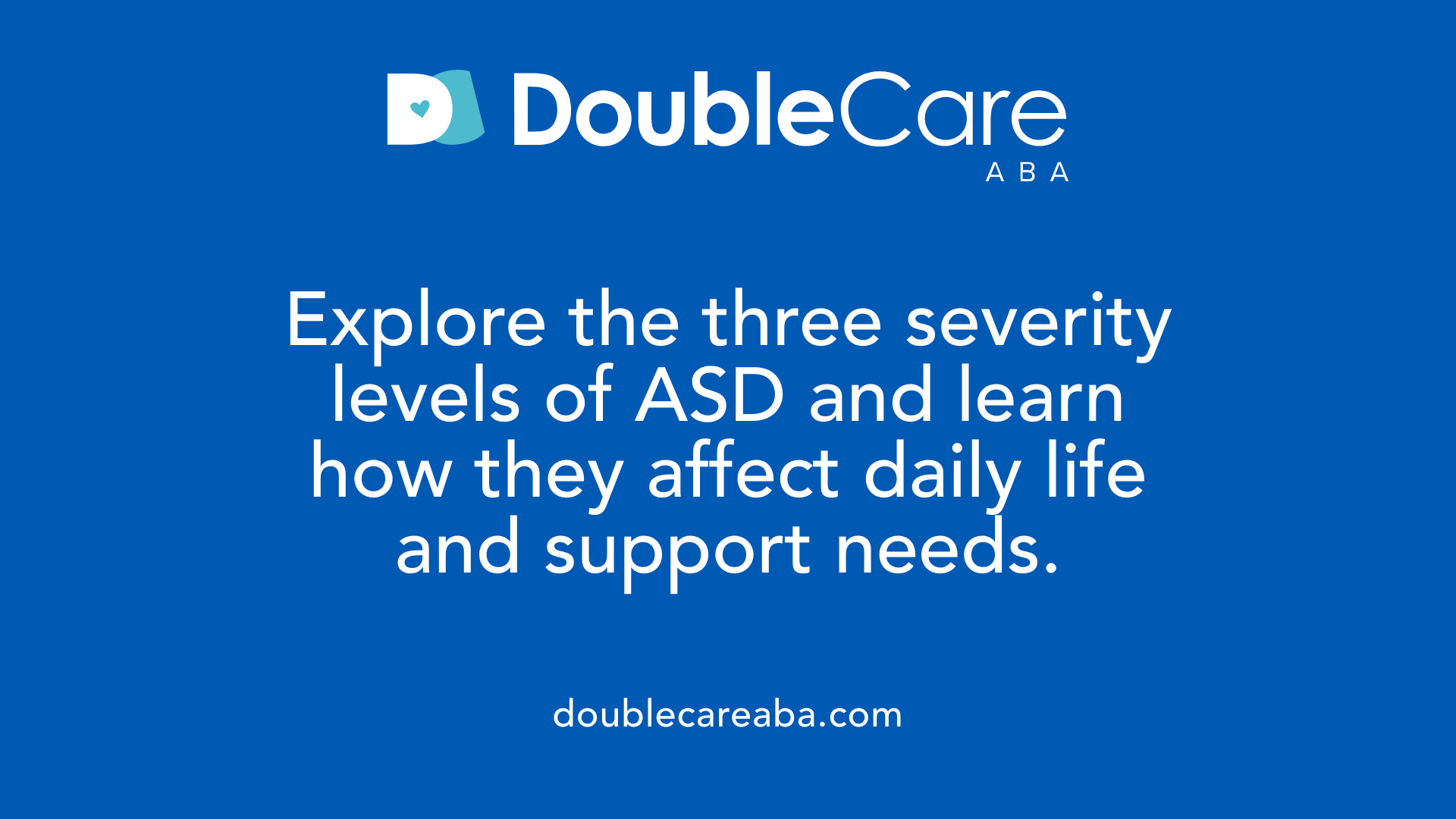
Overview of the DSM-5 classification system
The Diagnostic and Statistical Manual of Mental Disorders, Fifth Edition (DSM-5), classifies autism spectrum disorder (ASD) into three severity levels based on the amount of support an individual needs for social communication and behavioral challenges. This system helps clinicians tailor interventions and support plans appropriately.
Definitions of Level 1, Level 2, and Level 3 autism
Level 1 autism requires some support; individuals may speak in full sentences but struggle with social reciprocity and organization. Their behaviors cause noticeable but manageable disruptions in daily life.
Level 2 autism indicates more significant difficulties, with marked deficits in social interaction and frequent restrictive and repetitive behaviors. These individuals often need substantial support, especially in structured settings.
Level 3 autism represents the highest severity, involving severe impairments in verbal and nonverbal communication, minimal responses to social overtures, and behaviors that substantially interfere with daily functioning. Such individuals often require very substantial, around-the-clock support.
Guidelines for determining severity levels
The classification hinges on core symptom severity across two main domains: social communication and restricted, repetitive behaviors. Professionals assess these symptoms through observations and caregiver reports, considering how behaviors impact independence and daily life.
While severity levels provide a useful framework, they are supplemented by evaluations of co-occurring conditions such as intellectual disabilities or sensory sensitivities. This multidimensional approach ensures support plans are customized to individual needs.
| Severity Level | Support Needed | Typical Characteristics | Example Interventions |
|---|---|---|---|
| Level 1 | Support | Mild impairments, some social challenges, inflexibility | Speech therapy, social skills teaching |
| Level 2 | Substantial support | Clear communication difficulties, frequent repetitive behaviors | Behavioral therapies like ABA, educational support |
| Level 3 | Very substantial support | Minimal verbal communication, severe repetitive behaviors, high dependency | 24/7 supervision, AAC tools |
Understanding these levels can improve awareness and support strategies for individuals across the autism spectrum, aligning intervention with specific needs.
Diagnostic Criteria and Support Needs Across Levels
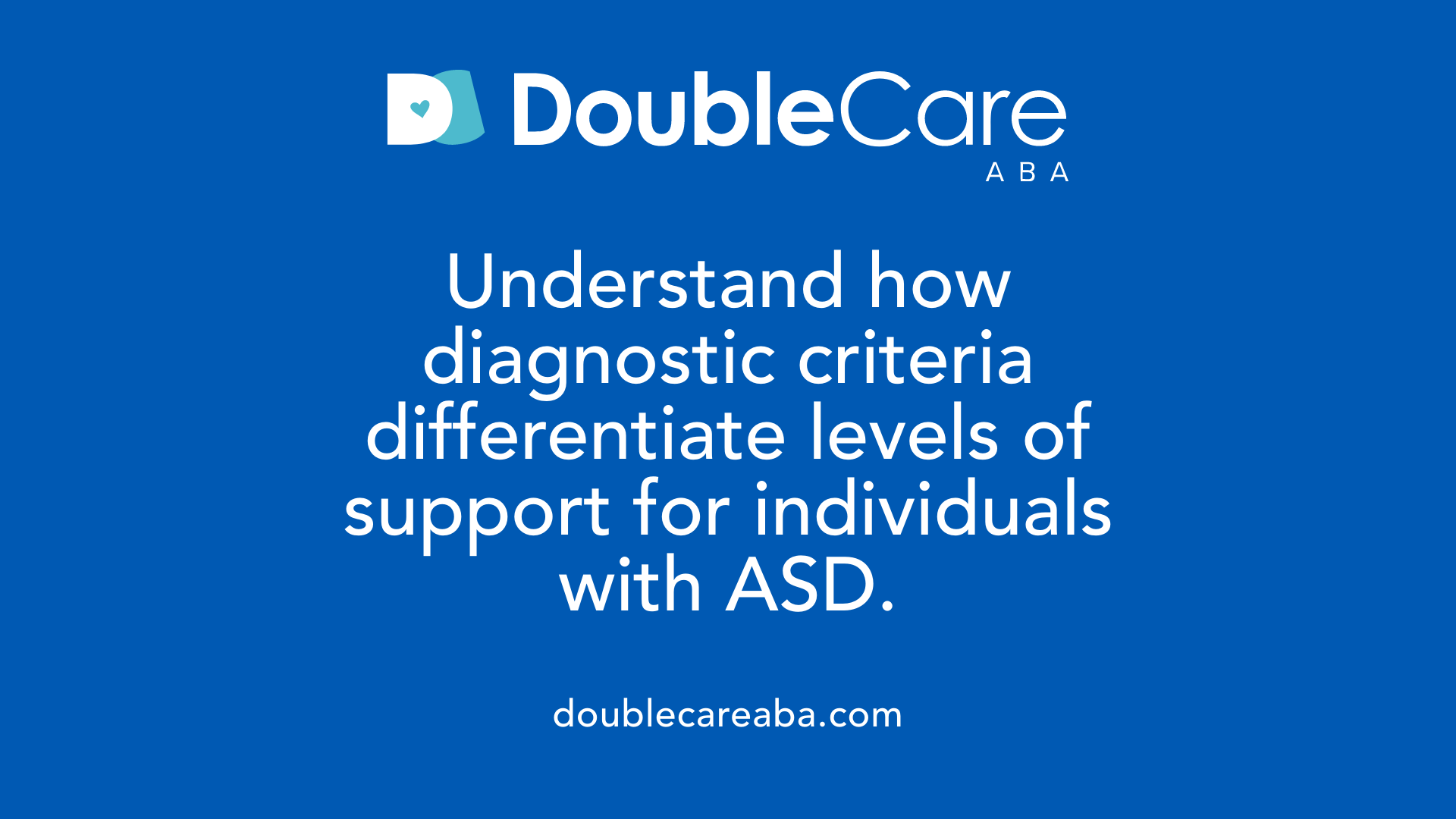
What are the diagnostic criteria for the different levels of autism?
Autism Spectrum Disorder (ASD) is diagnosed based on specific criteria outlined in the DSM-5, which categorize individuals into three levels according to the severity of their symptoms and support needs. All levels share core characteristics such as persistent impairments in social communication and interaction, as well as restrictive and repetitive behaviors.
At the foundation, individuals must demonstrate difficulties in social-emotional reciprocity, nonverbal communicative behaviors, and establishing or maintaining relationships. In addition, they often engage in restrictive behaviors, such as repetitive movements or intense interests.
The differentiation between the levels hinges on how these symptoms impact daily functioning and the amount of support needed. Here's how they vary:
| Level | Description | Support Needs | Typical Features | Intervention Approaches |
|---|---|---|---|---|
| Level 1 | Requiring support | Mild impairments; some assistance needed | Noticeable social issues; some inflexibility | Social skills training, speech therapy, behavioral interventions, Cognitive Behavioral Therapy (CBT) |
| Level 2 | Requiring substantial support | Moderate impairments; significant deficits | More obvious social communication difficulties; frequent restricted behaviors interfering with daily life | Applied Behavior Analysis (ABA), structured educational programs, accommodations |
| Level 3 | Requiring very substantial support | Severe impairments; often nonverbal or minimally verbal | Very limited social interaction; severe repetitive behaviors; sensory sensitivities | Intensive, around-the-clock supervision; use of augmentative and alternative communication (AAC) tools; sensory integration therapy |
The diagnosis considers not only the core symptoms but also how these symptoms interfere with everyday functioning. This helps clinicians formulate individualized support plans that match the severity of each person’s needs.
Understanding these levels allows educators, caregivers, and health professionals to provide appropriate interventions and resources, facilitating better outcomes for individuals across the spectrum. The DSM-5 guidelines serve as the standard for diagnosing and supporting those with ASD, ensuring tailored strategies based on each person's support requirements.
Core Symptoms and Severity: How They Vary
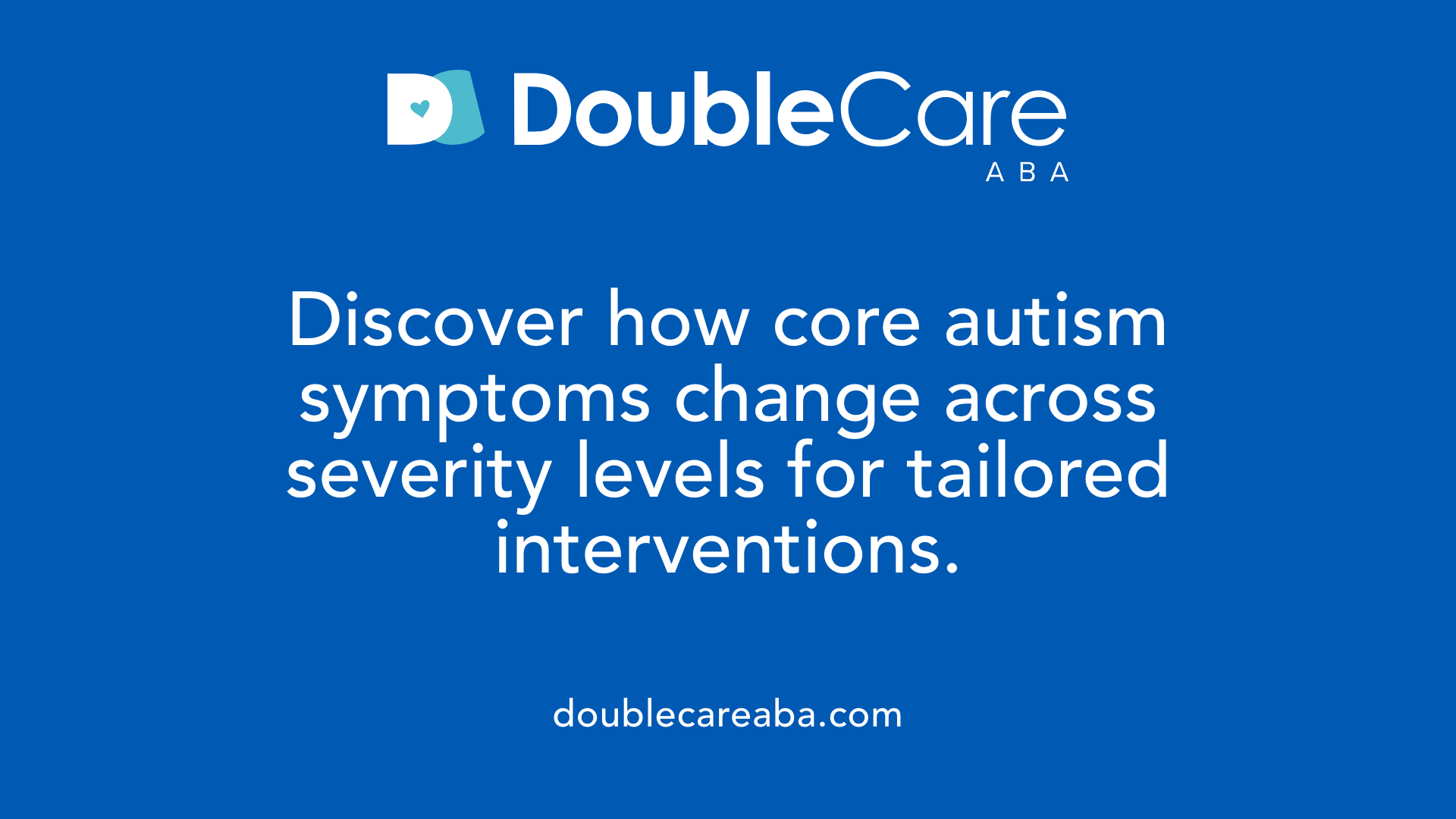
How are the characteristics and symptoms of autism different across its severity levels?
Autism spectrum disorder (ASD) presents with a range of social communication impairments and behavioral patterns that become more prominent and problematic as the severity level increases.
At Level 1, often labeled as requiring support, individuals show noticeable social communication difficulties. They may speak full sentences but struggle with reciprocal social interactions, organization, and flexibility. These challenges often require some support, especially in social skills and planning, but they generally function with minimal assistance.
Moving to Level 2, classified as requiring substantial support, individuals face more pronounced issues. These include limited social interactions, frequent restrictive and repetitive behaviors, and noticeable challenges in verbal communication. Their behaviors tend to interfere significantly with daily life, requiring more structured interventions such as behavioral therapies and educational accommodations.
At the most severe end, Level 3 individuals require very substantial support. They often have severe communication impairments, sometimes being nonverbal or minimally verbal. Social engagement is minimal, and behaviors—such as repetitive movements or sensory sensitivities—can severely hinder their independence. These individuals typically need around-the-clock supervision and extensive therapeutic support.
The severity levels vividly illustrate how core symptoms manifest differently across the spectrum. As the severity increases from Level 1 to Level 3, impairments grow more profound, impacting communication capabilities, social reciprocity, and daily functioning. Understanding these differences is crucial for tailoring appropriate interventions and supports for each individual.
Daily Life and Support Requirements for Each Level
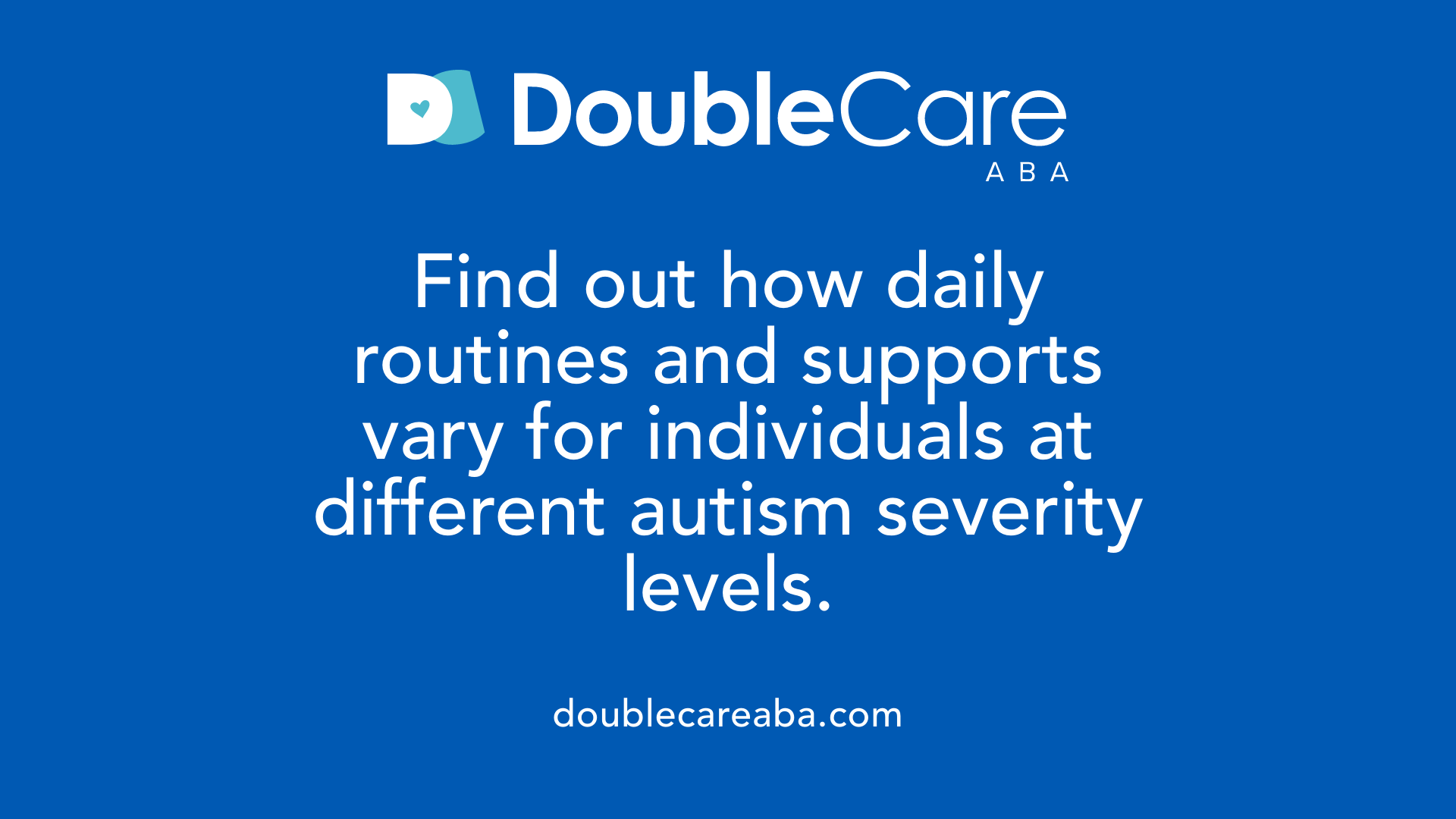
How do the severity levels of autism influence individuals’ daily lives and support needs?
Autism spectrum disorder (ASD) severity levels serve as a guide for understanding the particular challenges faced by individuals and the support they require. Each level reflects the degree of impairment across social communication, behavioral patterns, and daily functioning.
At Level 1, often called the mild form, individuals may be able to manage many daily tasks independently but still experience notable difficulties with social interactions and organization. They might need mild supports such as social skills training or organizational assistance to navigate social settings or plan daily routines effectively.
Level 2 autism involves more significant challenges. These individuals often require substantial support to handle communication and behavioral difficulties. They may benefit from structured behavioral therapies, like Applied Behavior Analysis (ABA), and educational accommodations that help improve social skills and reduce disruptive behaviors.
The most severe, Level 3, encompasses individuals who often cannot communicate verbally or require minimal verbal communication aids such as augmentative and alternative communication (AAC) tools. They typically need constant supervision and comprehensive support for everyday activities, from personal care to safety monitoring.
Support needs can be heavily influenced by co-occurring conditions such as intellectual disabilities, sensory sensitivities, or mental health issues like anxiety. These complexities can heighten the requirements for personalized interventions and support strategies.
Understanding these severity levels helps tailor interventions that enhance independence, safety, and quality of life for individuals on the spectrum. Accurate assessment and ongoing support are crucial to addressing each person’s unique challenges and strengths.
| Severity Level | Support Needs | Typical Interventions | Impact on Daily Life |
|---|---|---|---|
| Level 1 | Some support for social skills and organization | Speech therapy, social skills training | Mild difficulties in social settings, manageable daily routines |
| Level 2 | Substantial support for communication and behaviors | ABA therapy, educational supports | Significant challenges in social interaction, need for structured support |
| Level 3 | Very substantial support, possible supervision needed | AAC, 24/7 supervision, intensive behavioral therapy | Limited communication, reliance on assistance for daily activities |
This classification underscores the importance of a nuanced, multidimensional approach to assess individual needs, including factors beyond core symptoms such as co-occurring conditions and environmental influences. Properly tailored support can greatly improve the everyday experiences of those on the spectrum.
Assessment and Classification Tools
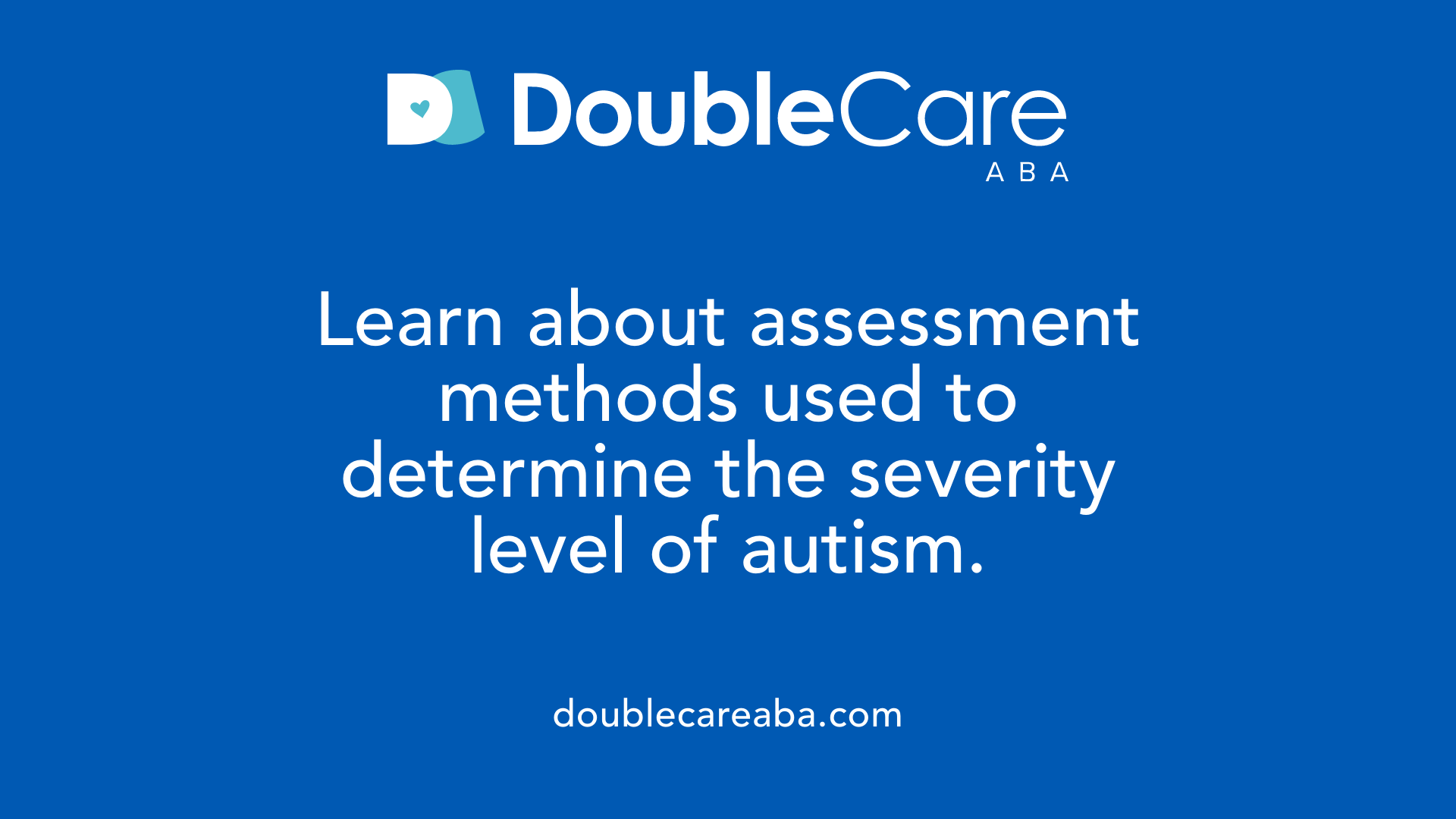
What assessment tools and methods are used to determine the severity level of autism?
To accurately determine the severity level of autism spectrum disorder (ASD), clinicians rely on a combination of clinical observations, interviews with caregivers, and standardized diagnostic instruments.
Standardized tools such as the Autism Diagnostic Observation Schedule (ADOS and ADOS-2) are widely used to assess an individual's communication skills, social interactions, and repetitive behaviors. These assessments involve structured activities that help observe behaviors relevant to ASD.
The Childhood Autism Rating Scale, Second Edition (CARS-2), is another common instrument. It rates the severity of autism symptoms based on direct observation and caregiver reports, providing a score that correlates with severity levels.
Besides these, additional assessments such as the Autism Diagnostic Interview-Revised (ADI-R), which collects detailed developmental histories, the Diagnostic Interview for Social and Communication Disorders (DISCO), and the Ritvo Autism Asperger Diagnostic Scale-Revised (RAADS-R) offer comprehensive insights into behaviors, language development, and social skills.
Interpreting support needs involves reviewing these assessment results alongside professional judgment. The severity classification into Level 1, Level 2, or Level 3 depends on the observed impairments in social communication and behaviors, as well as how these impact daily functioning. This multidimensional approach ensures a tailored understanding of each individual’s specific needs and guides intervention planning.
| Assessment Tool | Focus Area | Description | Typical Use |
|---|---|---|---|
| ADOS / ADOS-2 | Social and communication behaviors | Structured activities that evaluate social interaction, communication, and repetitive behaviors | Core diagnostic step |
| CARS-2 | Symptom severity | Ratings based on observation and caregiver input, measuring severity levels | Severity categorization |
| ADI-R | Developmental history | Detailed interview covering autism symptoms from early childhood | Complementary assessment |
| DISCO | Persistent behavioral patterns | Detailed behavioral profile and developmental history | Developmental diagnosis |
| RAADS-R | Adult autism traits | Self-report questionnaire for adults with suspected ASD | Adult diagnosis |
Using these tools, professionals integrate observational and report-based data to classify the severity level and determine appropriate support strategies.
Evolving Classification Systems and Future Perspectives
How has the classification system for autism severity evolved over time?
The approach to diagnosing and understanding autism has changed significantly over the years. Historically, autism was categorized into separate diagnoses, such as Autistic Disorder, Asperger’s Syndrome, and Pervasive Developmental Disorder-Not Otherwise Specified (PDD-NOS). These distinctions often created confusion and lacked clarity in terms of severity and support needs.
With the publication of the DSM-5 in 2013, the classification shifted toward a spectrum model. Instead of fixed diagnostic categories, autism spectrum disorder (ASD) is now understood as a range of conditions characterized by varying levels of severity. The DSM-5 classifies ASD into three levels based on the amount of support an individual needs:
| Level | Description | Support Needed | Typical Challenges |
|---|---|---|---|
| Level 1 | Requiring support | Mild impairments in social skills, organization | Difficulties with social interaction, organizing activities |
| Level 2 | Requiring substantial support | Marked deficits in communication, rigid behaviors | Restricted interests, repetitive behaviors interfering with daily life |
| Level 3 | Requiring very substantial support | Severe deficits, minimal communication, intense behaviors | Limited social responses, need for constant supervision |
This model emphasizes the support needs associated with core symptoms, rather than fixed labels. It aims to tailor interventions more precisely to individual requirements, promoting a better understanding of autism’s diverse presentations.
However, the move to support-based levels has not eliminated discussions about how best to capture the variability of autism. Experts continue to advocate for a more comprehensive, multidimensional approach that considers co-occurring conditions such as intellectual disabilities, language delays, and sensory sensitivities. These factors can greatly influence the level of support required and impact daily functioning.
Ongoing research reveals that severity may fluctuate over time, influenced by environmental adaptations, treatment interventions, and developmental changes. As a result, some professionals argue for a classification system that remains flexible and accounts for individual trajectories. The future of autism classification may involve integrating core symptoms, support needs, co-occurring conditions, and environmental factors to better inform personalized support plans.
In summary, the evolution of autism classification reflects a shift from rigid categorization to a spectrum-based, support-oriented perspective. This progression aims to enhance understanding and improve the quality of life for individuals with autism by aligning diagnostic criteria with real-world needs and challenges.
For further insights, a comprehensive review of the history and future directions of autism classification can be found under the search query: "History and future of autism classification."
Supporting Diversity on the Spectrum
Understanding the three levels of autism spectrum disorder enhances our ability to provide personalized support and interventions. Recognizing the unique challenges and strengths associated with each level allows caregivers, educators, and clinicians to tailor strategies effectively. As our understanding of autism continues to evolve, a multidimensional approach that considers severity, co-occurring conditions, and individual circumstances will promote greater inclusion, independence, and quality of life for all individuals on the spectrum.
References
- ASD levels of severity
- Levels of Autism: An Explanation
- Clinical Testing and Diagnosis for Autism Spectrum Disorder
- Understanding The 3 Levels Of Autism
- Autism severity and its relationship to disability - PMC
- The 3 Levels of Autism Explained
- ASD levels of severity
- Autism severity and its relationship to disability - PMC
- Levels of Autism: An Explanation
















